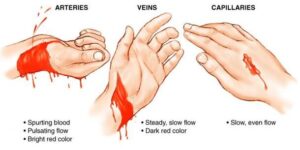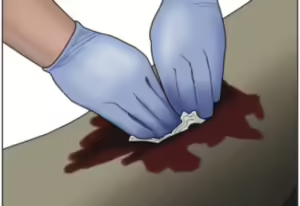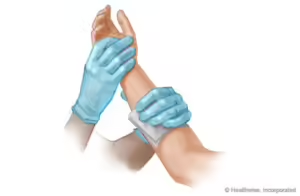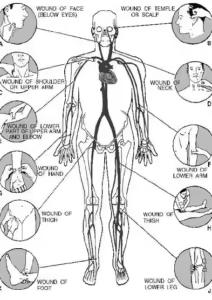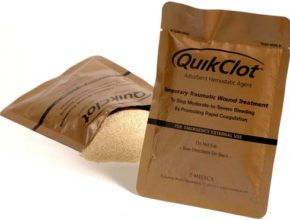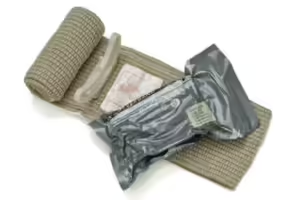ESCAPE!
Background
I was about to post the blog last week on activate charcoal. Don’t worry it’s still coming.
After seeing the news on what happened to our 50th state, Hawaii,and what happened to people that were trapped by the fires and sad to say road blocks.
I’m going to reference some news articles for back ground
https://apnews.com/article/hawaii-fires-timeline-maui-lahaina-road-block-c8522222f6de587bd14b2da0020c40e9 In deadly Maui fires, many had no warning and no way out. Those who dodged a barricade survived
From the article: “But dozens of others found themselves caught in a hellscape, their cars jammed together on a narrow road, surrounded by flames on three sides and the rocky ocean waves on the fourth. Some died in their cars, while others tried to run for safety.”
I’ve been a first responder, did my time as a volunteer firefighter and paramedic. Being from the desert southwest I’ve dealt with wildfires. We had and have larger fires. Hundreds of thousands of acres. But never the death and destruction of what happened in Maui. This blog isn’t a rehash of what happened. It’s not a how to on how to prevent this from happening. This is about getting you and your family OUT of danger.
Planning.
For decades you all have heard people like me tell you. “You need a BOB, Bug Out Bag” And you need X amount of food, water and change of clothes. Also need Y type of weapons and reloads. You need this brand of radio and you need need need. Mostly we tell you the things you need, is well, you need them. And to be perfectly transparent. We make a little bit of money off purchases you make from the links we research and share with you. Today we’re going to diverge (somewhat) the you need to buy this. To you need to PLAN and RESEARCH this. Folks like me sometimes forget we need not tell you to buy something, When we should be telling ideas on how to find your own answers. This post starts that trend here.
Getting the heck out of Dodge
According to the news articles a lot of people died in their homes and automobiles.
Lets take the sacrifice those people made and learn from them.
So our first bit of planning and research is to put down the computer, phone and tablet. (Well after you read this. Please! ) And GET OUT. By that I mean get out of your home and explore. Really explore. Find those over grown logging roads and dirt tracks. The back alleys side streets and weed choked vacant lots. Take your GPS. You will get lost. And that’s part of this exercise, And get maps. Lots of maps. As was found out in Maui\.
LAHAINA, Hawaii (AP) — Hawaii emergency management records show no indication that warning sirens sounded before people ran for their lives from wildfires on Maui that killed at least 55 people and wiped out a historic town. Instead, officials sent alerts to mobile phones, televisions and radio stations — but widespread power and cellular outages may have limited their reach.
https://www.pbs.org/newshour/nation/questions-grow-over-wildfire-warnings-as-maui-death-toll-rises
Without cell service your phone GPS won’t work. Stand alone GPS like Garmens will. But batteries die, A protected laminated map will last forever. Learn to read a map and use a compass. If anyone says again “My phone ALWAYS works for Google Maps” read again the above article. Get maps. You can even download and print maps for free from National Geographic. https://www.natgeomaps.com/trail-maps/pdf-quads. Print them. Protect them. And learn to use them. Hmmm, note to self. Looks a good old fashioned land navigation class is in order here.
Moving out. When?
When is it time to move out? That is something you’d have to answer for yourself. IN the above links, the major issue was no warning. And the major reason was power, land line and cellular service was down. A NOAA radio with battery backup is ESSENTIAL. NOAA stations have alternate power and keep broadcasting alerts. Get one like this https://amzn.to/3OPOm9e. That runs normally on household power, but has battery backup. NOAA broadcasts not only weather but disaster inforamtion. It can give size and location of whatever is heading your way. Now when. First most of us preppers are borderline horders. Remember. DO. NOT. TAKE EVERYTHING YOU OWN! Take what you need to survive. And you did remember to place cache’s here and there? If not do so. NOW!
Here in South Carolina we have Hurricane Boxes. It’s a box that we keep packed during hurricane season. In it it has food for 4 days. Water for the same. (Not all is on the same box.) Clothes Ammo, spare 2 meter radios. (I’ll talk about them in a bit) Important papers. Including your pet’s paperwork. Camp gear. It sounds like a lot. We adjust as the weather dictates. But all will fit in the back of either of our Jeeps. And on the rood racks. We have a small 4×8 trailer that holds the gear much easier.
Sounds good but…..
If you have the time to load all that. (Our best time with My wife and I is 10 minutes) You’re set for days, if not weeks out in the rough. If you know how to live off the land. But being from the Southwest, we’re experienced in wildfire, and you have exactly zero minutes to get your stuff and RUN. We always have backpacks in each Jeep. Standard 72 hour bags with MRE’s and a bottle of protein tablets. (link Survival tabs) A case of water and a water filter. And grab on the way out money and your folder of important documents. Things are replaceable. People are not. If you don’t feel like building your own BOB, this is a decent option. https://amzn.to/45tR8Iz
On the road
One thing we saw from Hawaii is that as good intentioned “Government Agencies” are, they may not always have your best interests at heart:
From the AP News Report
As flames tore through a West Maui neighborhood, car after car of fleeing residents headed for the only paved road out of town in a desperate race for safety.
And car after car was turned back toward the rapidly spreading wildfire by a barricade blocking access to Highway 30.
One family swerved around the barricade and was safe in a nearby town 48 minutes later, another drove their four-wheel-drive car down a dirt road to escape. One man took a dirt road uphill, climbing above the fire and watching as Lahaina burned. He later picked his way through the flames, smoke and rubble to pull survivors to safety.
What do you do if you come upon a road barricade as describe in the AP news Article?
Legal Warning.
We at the Medic Shack cannot and will not tell you to ram the barricade.
And.
What I will say is that if you have to, go around it. Do not ram it head on. Back into it. Ramming it head on WILL damage your vehicles cooling system. This leaves you on foot trying to out run a say a fire that is moving at 20-60mph+. Even if you have a super duper monster truck brush guard, there is no guarantee that a stick, screw or nail will not be driven into to your radiator. Backing into it, sure you will damage your rear end, lights, lift or tailgate. Your car is still drivable. Decades ago when I was in the service, we were taught when approaching a barricade, to 1 Put out security and recon the area. (May not have time for this.) 2. If possible go around. 3. Pull it down if you have sufficient vehicle weight. 3. Back though it to protect your engine. And 4. Blow it. (May not be a good option, but…… Remember. Your vehicle is replaceable. You and your family are not.
And of extreme importance. PRACTICE driving your vehicle off road. Learn how it performs, learn how to judge a trail. You don’t need to have a top of the line 4×4 monster off road race ready rig. I can’t tell you how many times I’ve taken a 2wd pickup though places that made Jeeps cringe. I’m decent. My buddy Cope Reynolds is GOOD! He and I have taken a 2wd F150 completely across mountains in New Mexico that you would have not thought a mountain goat could go. AND most importantly he did it with out tearing the truck up. You can find Cope here, www.SouthwestShootingAuthority.net And his blog is www.SWSAblog.com
Communication.
This is important. As was reported, cellular, land line and power was out. But what worked was ham radio. I CANNOT stress enough how important it is to have radios and spare batteries. At the very least those inexpensive FRS walkie talkies you see on Amazon and Walmart, will allow you communicate between vehicles. There is a better option. Baofeng UV5R or UV82 family of radios. These are real ham radios and you need a license to “legally” operated them. I recommend them because they are inexpensive. Not cheap. There is a difference. With both radios you can have two frequencies set. One for the repeaters that are in operation. And one on what is called Simplex. Non repeater frequencies that allow you to talk to your group on one channel and have the repeaters on the second. Before things go bad.
Get Legal!
Your License. Go to www.hamexam.org, take the tests until you get at least 85% continually. Pay your testing and license fee and get your Technician license. Yes the FCC over looks using a radio with out the proper license in an emergency. But if you have your ticket, you can PRACTICE. That way when something bad happens you will know how to use your radio find the repeaters and communicate. Oh did I mention that the Baofeng and a few others can receive NOAA broadcasts., AND regular FM radio? And have built in flashlight, AND a very loud alarm to alert people to your location if you need rescuing?
Not bad for under $40.00 a radio. And if you happen to drop it in a lake or river, you’re not out hundreds of bucks that a Kenwood or Yeasu would cost. And don’t buy just one. By at least 2 for each person. We have 12. 3 for each person. And 12 UV82’s were still less than ONE Yeasu or Kenwood HT. The UV82 can be found on Amazon here, https://amzn.to/45vkBlr and the UV5R here, also at Amazon https://amzn.to/3El7TcS
In Closing.
This is a work in progress. My way may not be right for YOU. But I hope it sparks a better idea on what is right for you. What I will say is PRACTICE! Go out and explore ALL the ways out of your home and back to it. Get lost NOW. Instead of getting lost when your or your families life is at stake.
Additionally Christine and I, would like to apologize in getting this out late. We had some preps to catch up on. Hurricane Idalia decided to hit Florida as a Cat 4, and wandered over the top of us as a tropical storm. We’ll do better!


